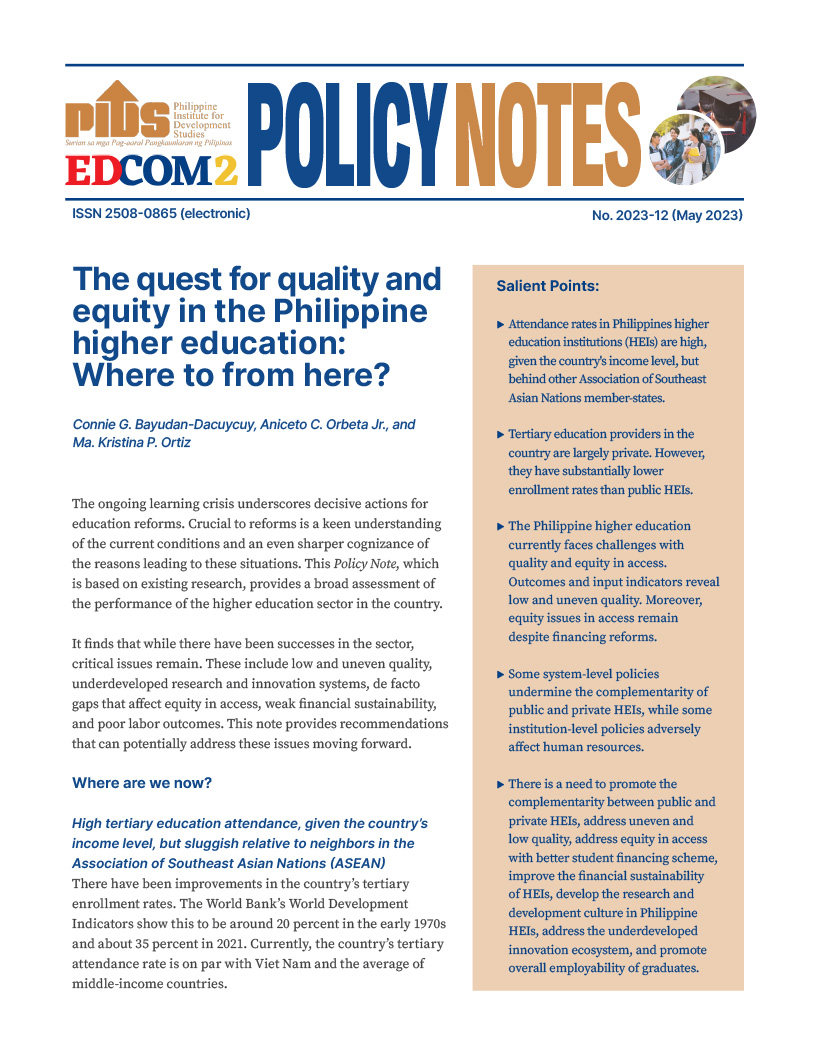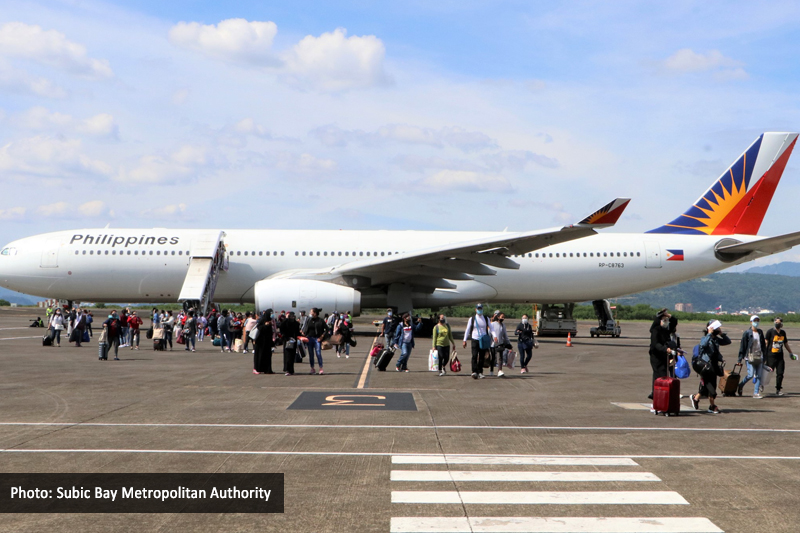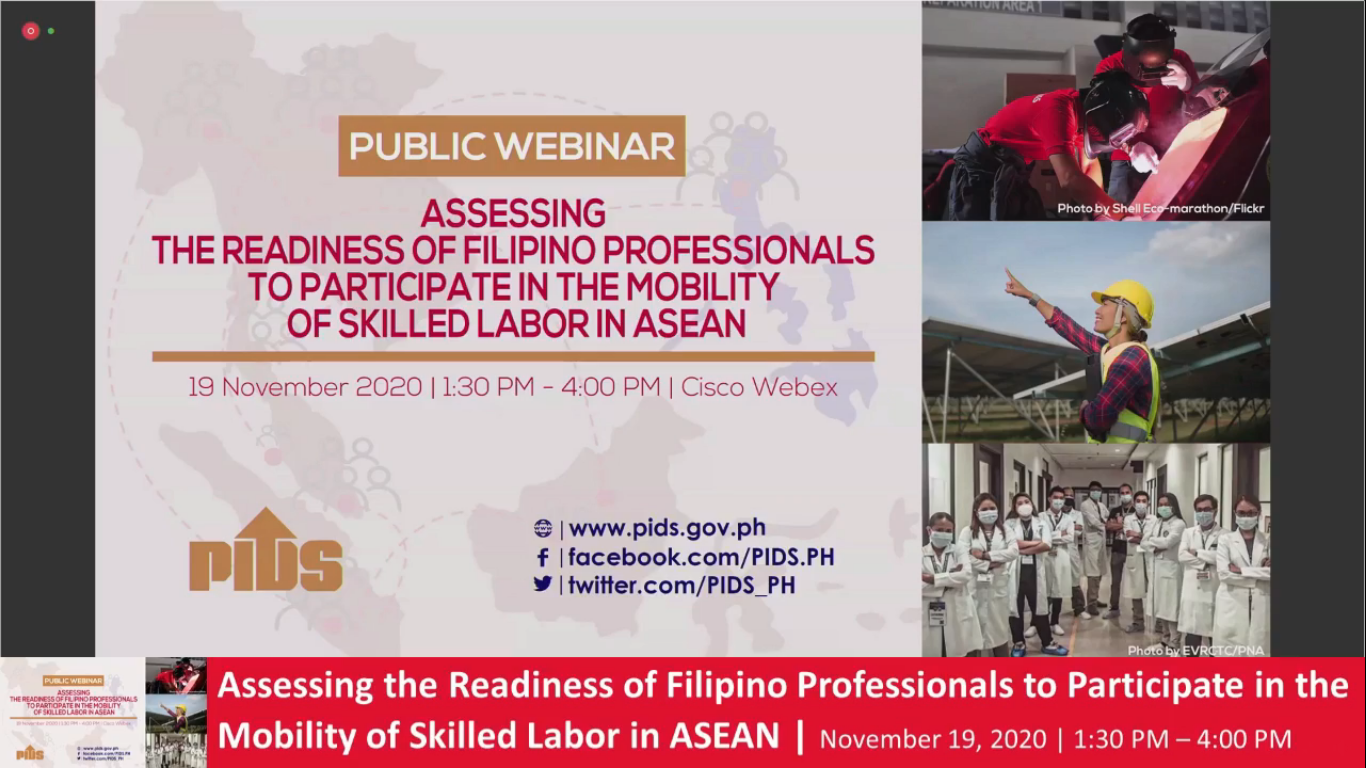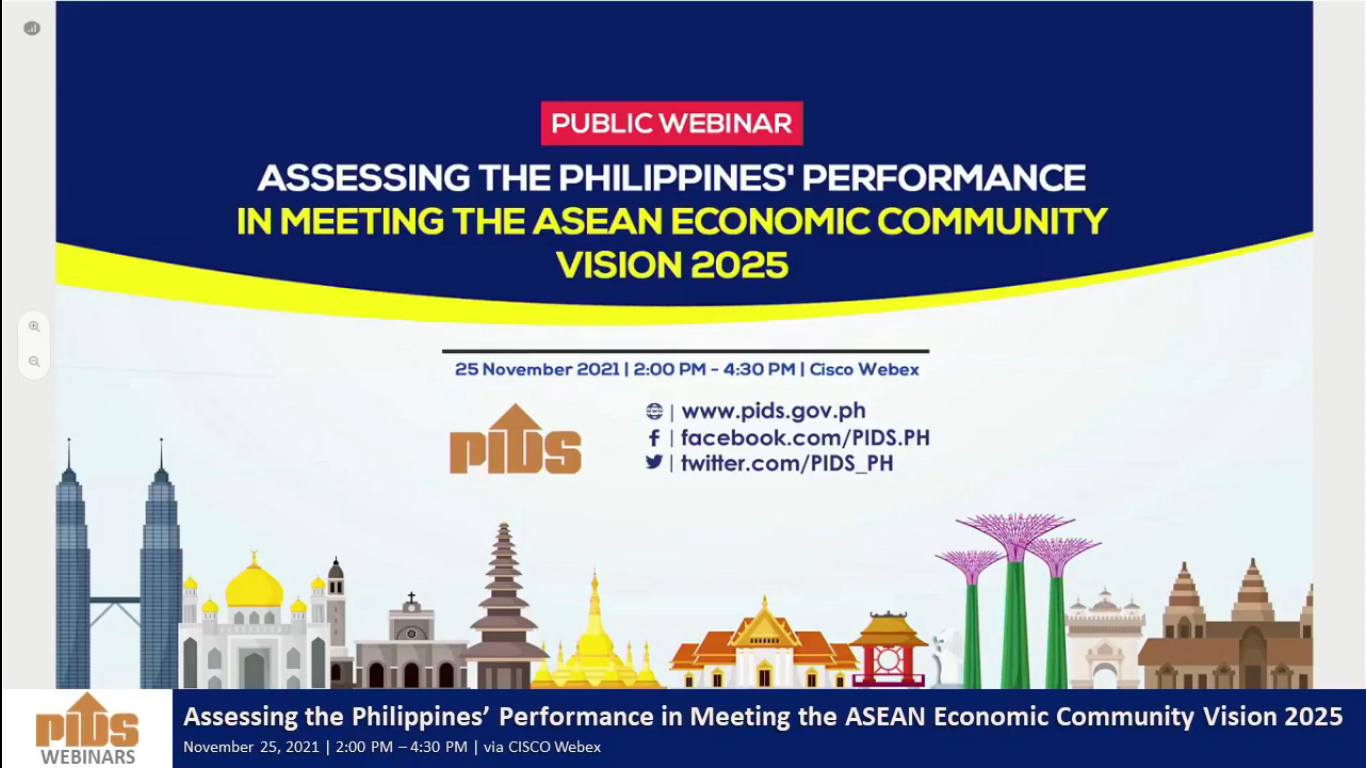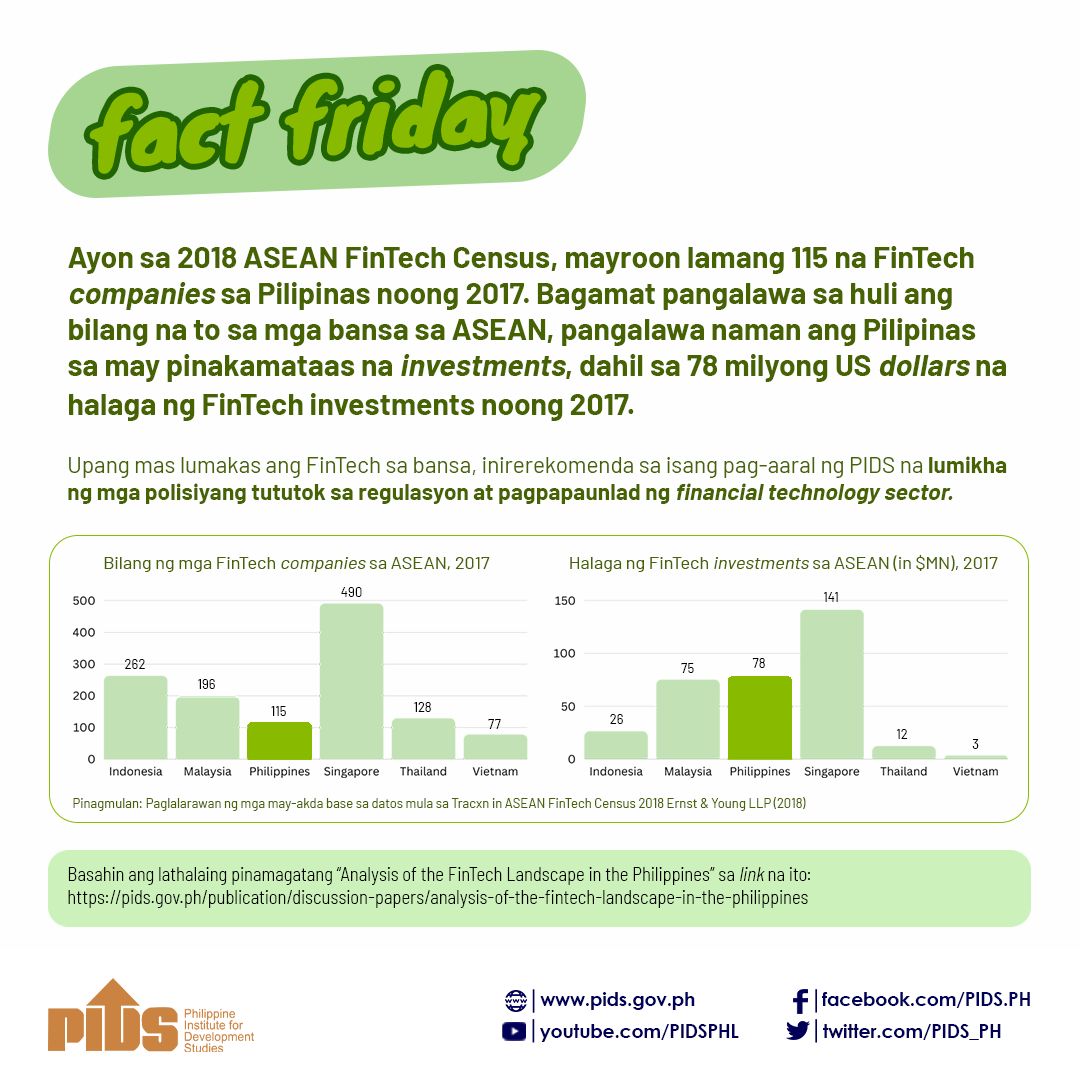Think tank study points to lack of strategy, underspending
Scholars of government think tank Philippine Institute for Development Studies (PIDS) said in a study the country is lagging behind its Asean (Association of Southeast Asian Nations) neighbors in infrastructure development due to underspending and a lack of strategy.
Last year’s growth has been curtailed by the government’s inability to use available funds for infrastructure, the Philippine country report by the PIDS said.
The PIDS research fellows said in the report the government must have an infrastructure financing strategy that not only focuses on funding but on the means of facilitating the way projects are identified, designed, proposed, reviewed, and implemented.
In the report contained in the book published by the Economic Institute for Asean and East Asia (ERIA) titled "Financing Asean Connectivity,” PIDS President Gilberto Llanto and Senior Research Fellow Adoracion Navarro identified the challenges and provided policy recommendations.
Low infra-to-GDP ratio
The authors said challenges to Philippine infrastructure development include underinvestment, pointing out that infrastructure spending as a share of gross domestic product (GDP) averaged only 1.40 percent to 2.09 percent in 2008 to 2012.
At the same time, Llanto and Navarro added that the govern¬ment’s dependence on official development assistance as source of financing for infrastructure projects has been on a decline over recent years.
The result, the country has lagged behind most of its Asean neighbors in upgrading the quality of its infrastructure, they said.
Project delays
The authors also noted some delays in the implementation of public-private partnership (PPP) projects in the Philippines mainly because government units lack the capacity to ensure project quality-at-entry and efficiency in the processing of PPPs.
In addition, they said the PPP law is inadequate in dealing with competition and implementation problems.
Despite these obstacles, the authors gave a positive outlook for the Philippine government’s fiscal health, as well as the opportunities presented by new sources for financing infrastructure projects.
However, they noted that it is not really the availability of financial resources that is primarily restraining infrastructure development in the Philippines but the pace at which investments are being pursued.
In the regional context, the Financing Asean Connectivity report said the PPP mechanism is one way to build infrastructure in the region, especially in member-states where public funds are insufficient to finance infrastructure development.
Asean Masterplan
The book, which is authored by 13 Asean scholars and experts, stressed the important role of the PPP in achieving the objectives of the Master Plan on Asean Connectivity.
Asean has a goal to create an economic community from 2015. To achieve this goal, connectivity among the member-states needs to be given due importance, they said.
In 2010, the regional block adopted the Master Plan on Asean Connectivity (MPAC), which looked at physical, institutional, and people-to-people connectivity. However, there are certain obstacles that are unique to each member-state when it comes to financing infrastructure projects.
The report highlighted the different levels in Asean member-states of infrastructure policy, financing method and financial capacity.
For example, it said the PPP program has been significantly developed and used in Malaysia, Indonesia, Thailand, and the Philippines and recently, in Singapore.
Meanwhile, it said Cambodia and Vietnam have not yet formalized the PPP although private sector participation has become increasingly important in infrastructure development in these countries.
Laos and Myanmar have potential, although they are facing multiple challenges that range from a lack of fiscal resources to a lack of fiscal sustainability. Meanwhile, the PPP still takes a less significant role in Brunei, which has abundant public financial resources to build infrastructure, it added.//

